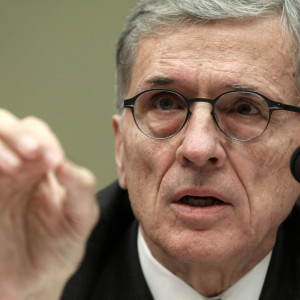A Republican senator sitting on a Federal Communications Commission appropriations panel this week uncovered a hole in the FCC’s proposal to curb fraud and abuse in its new Lifeline expansion plan.
While questioning FCC Chairman Tom Wheeler about new anti-fraud measures included in the plan, which raises the uncapped budget of the “Obama Phone” telephone subsidy program by $500 million and includes broadband Internet, Oklahoma Republican Sen. James Lankford outlined a scenario the FCC hadn’t covered.
Under the original program, providers themselves self-certified whether an individual was eligible for the $9.25 monthly subsidy — a system Wheeler described as “the fox guarding the hen house,” and one that led to multiple enrollments by subscribers and providers, both of whom could change a single letter or abbreviate a name to collect multiple subsidies per month across multiple providers.
The new plan establishes a single database to act as a “national eligibility verifier,” comprised of income eligibility information from federal programs like SNAP and Medicaid. The subsidy is limited to one per household, and providers must ping the database to confirm a potential subscriber is eligible before enrollment.
Individuals themselves can’t access the database and it prevents the “double dipping” that occurred under the previous system. However as Lankford pointed out, there’s nothing to stop providers from pinging existing customers eligible for the subsidy but paying for their own service, and offering them an additional service they could describe as free, but in reality would be paid for by Lifeline.
“How do providers not send out a notification to individual subscribers and say, ‘hey if you want an additional service, we can add XYZ service, and by the way, you also are eligible for this $9.25 additional and so it’ll really be free to you. If you sign up for this, we’ll also add this,’ and the provider gets an extra $9.25,” Lankford asked. “Because there are people that are not currently taking it that are paying their bill.”
“That is not the goal,” Wheeler said. “And I would look forward to coming back and to working with you to make sure that doesn’t happen.”
“I’m aware that’s not the goal,” Lankford said. “That’ll be something we’re going to have to work on long-term.”
Republican FCC Commissioner Ajit Pai, testifying alongside Wheeler, said the idea of the database was “old news,” and something the FCC originally intended to put in place by 2013, but “fell down on the job.”
“I’m afraid that this time around I wouldn’t be all that much more optimistic,” Pai said. “There is a database that currently carriers can override, and that’s part of the reason why we’re seeing some carriers now simply bypassing it, rejecting the no answer that they get from it, in order to sign up customers.”
Pai, who championed a “fiscally responsible” compromise proposal to update the program with Democratic FCC Commissioner Mignon Clyburn that was torpedoed at the last minute by congressional Democrats, said the proposal doesn’t technically support broadband adoption.
Lifeline’s minimum service requirements — 10 megabits-per-second download speeds for fixed and 3G for mobile — fall below the FCC’s own definition of broadband at 25 Mbps for fixed and 4G LTE for mobile. Democrats worry setting the bar too high could lead providers to set minimum prices too high and force Lifeline subscribers to pay out of pocket for service — a point where enrollment in the program drops off sharply.
“It seems to me that if, as the chairman said a year ago, ’25 Mbps connection has become table stakes in 21st century communication,’ poor Americans deserve just as much opportunity as anybody else,” Pai said.
Lankford pressed Wheeler on whether Lifeline was moving toward regulating a rate for free service from providers or acting as a partial subsidy, as the program was originally designed. In recent years, Lifeline adoption has tapered off in areas where the minimum service price exceeds the subsidy.
“We believe that the market will offer services in different types of equipment, different types of throughput, different types of data caps, etc., that will have multiple choices,” Wheeler said. “We have to walk away from the old Lifeline concept, which was a black dial telephone or a cellphone that we will dictate, and go to the concept of the market determining both what carriers will offer, and what consumers will choose.”

